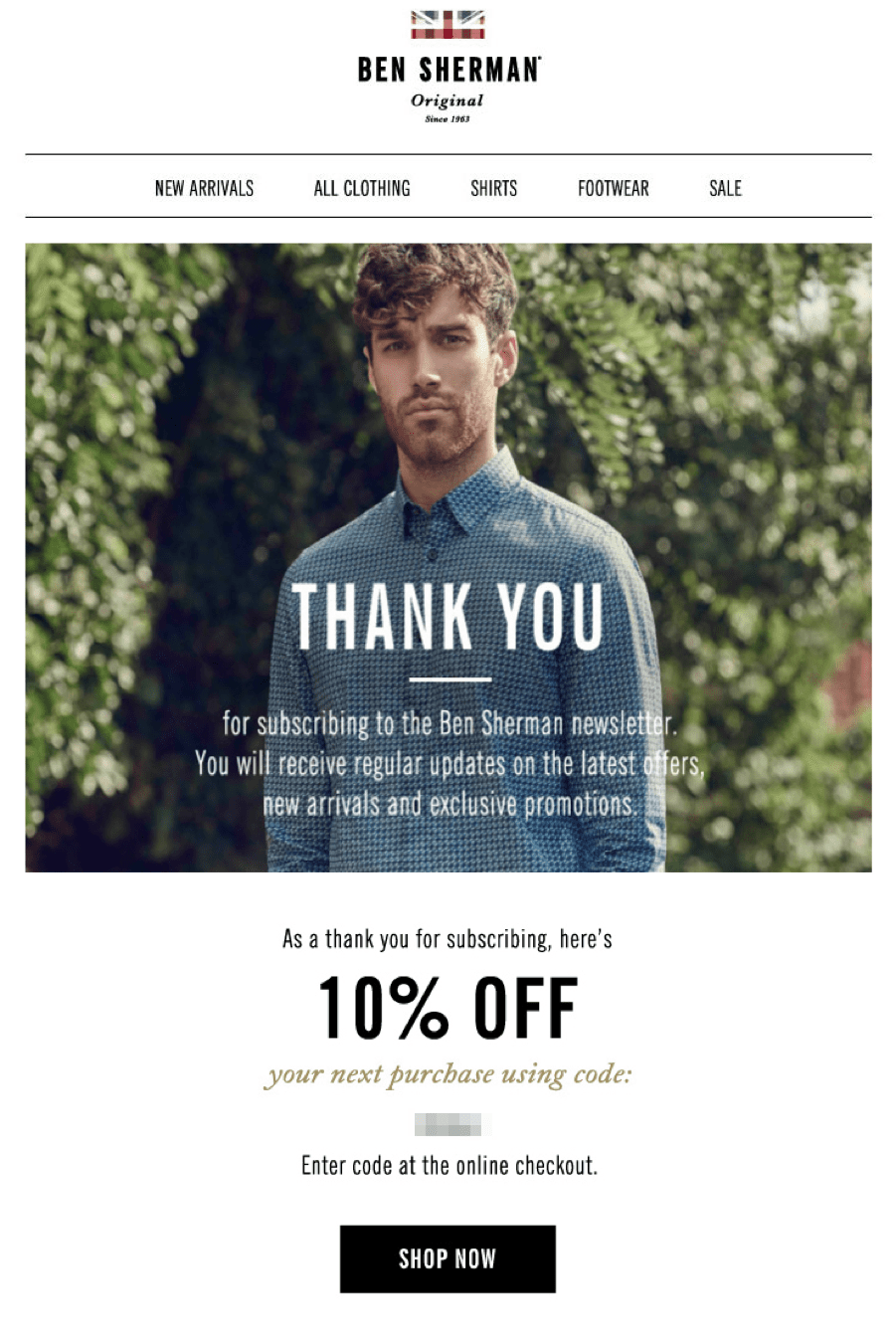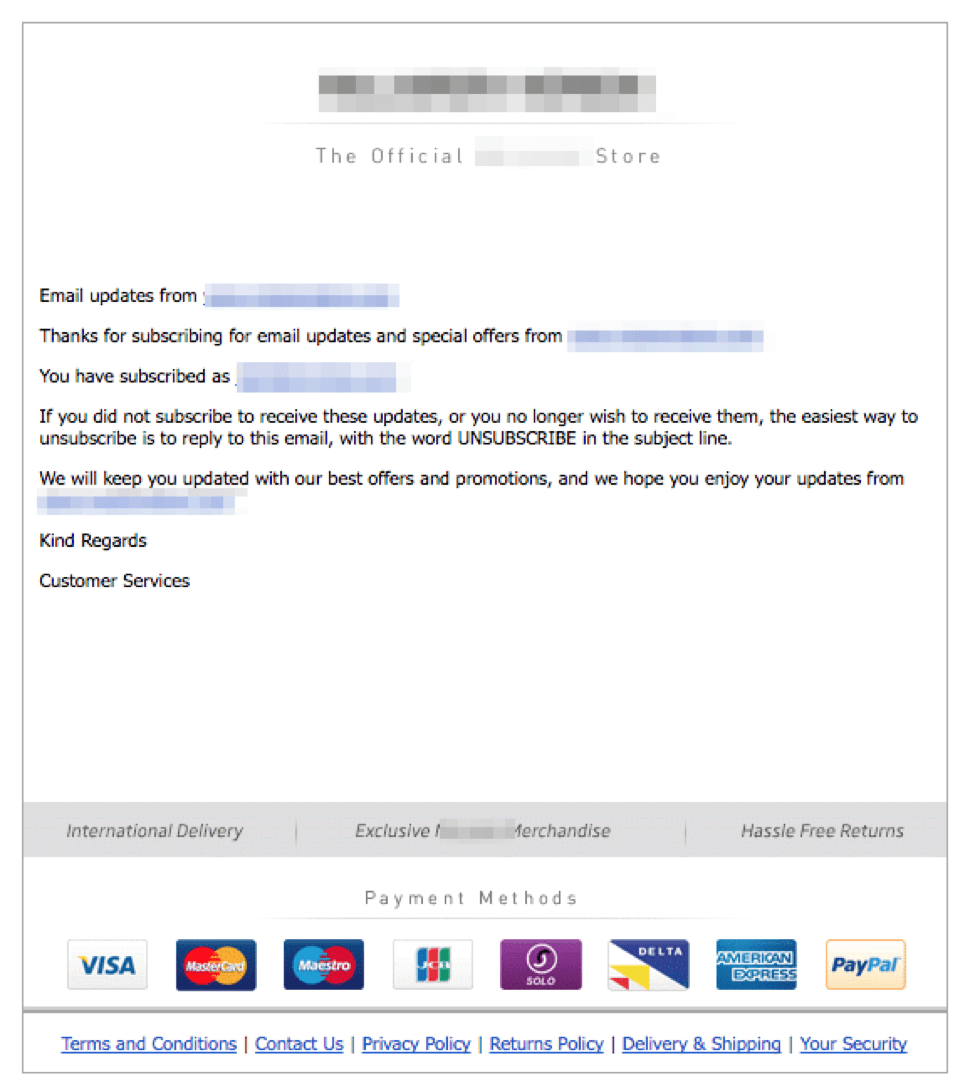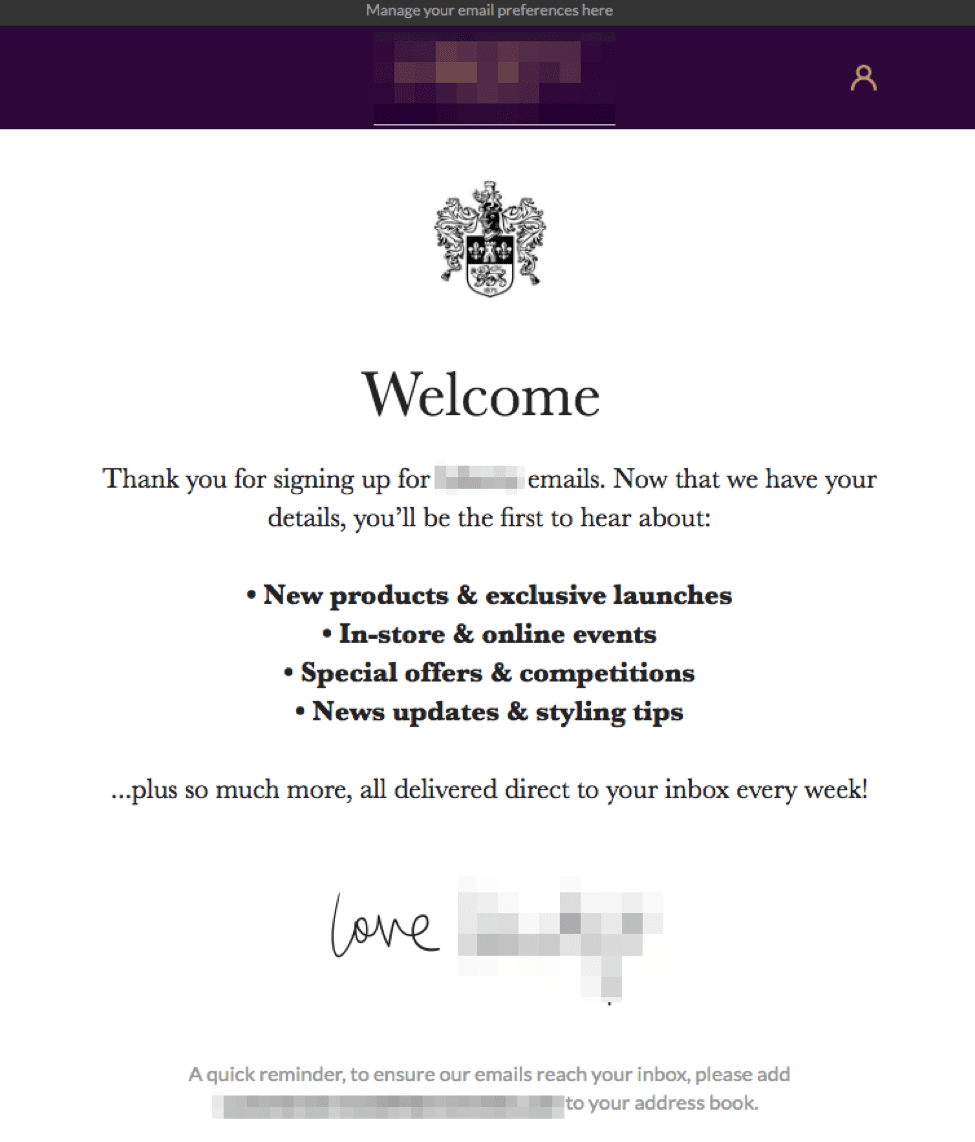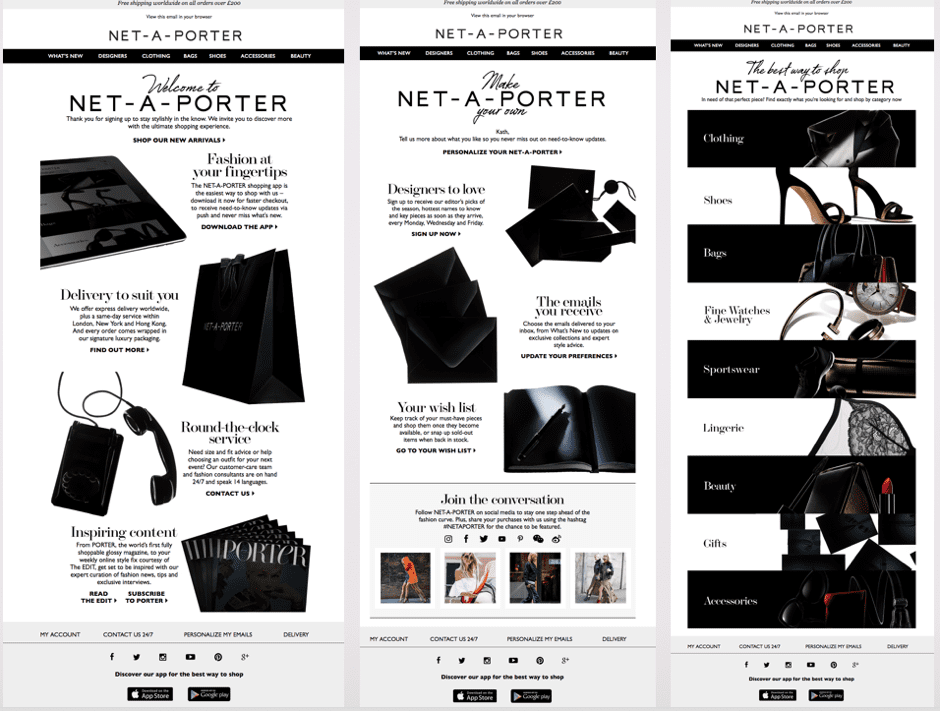80% of retailers have a welcome programme in place. So, is having the ability to push an email message to your subscriber (prospect) valuable or not?
Holistic Marketing recently analysed 80 retailers signup processes and what amazed me the most was how 87% of retailers have their subscribe below the fold, invisible to all, with the exception of those who are determined to work hard and find it.
Yet, 80% of retailers have a welcome programme in place. So, is having the ability to push an email message to your subscriber (prospect) valuable or not? It would appear that the website team says no, and the email teams say yes.
The problem, I believe is due to a disconnect between two teams and what they’re rewarded on. The email marketer fully understands the value of a subscriber, and indeed the value of a ‘new’ subscriber, who is eagerly opening, clicking and converting, yet they don’t ‘own’ the subscribe form on the website.
However, email marketers are more often than not rewarded for growing their list, which they’re not in control of. While the website team, who own the form placement, are not rewarded on list growth and as such, deprioritize the signup placement, and place it in the footer of the website. It’s a paradox that has always frustrated me.
So, based on this and to further our report (link to report) analysis, we examined the retailer’s welcome emails to see if they’re making the most of this opportunity.
Here are 6 of our findings (including recommendations)
1. 80% of retailers sent a welcome email after subscribing
On one hand, we’re glad to see that the majority of retailers are following up a subscription with a welcome email. On the other hand – why isn’t everyone else?
As mentioned previously, welcome emails are embraced as a firm best practice among email marketers. Here are just two reasons to send a message immediately to new subscribers. They remind subscribers that they gave permission to send commercial emails to their email addresses and are the entry point to being in the subscriber’s inbox – a foot in the door as such.
But welcome emails can do much more for both subscribers and the brands themselves. Here are just three:
- Remind subscribers about the email programme’s benefits.
- Send the subscriber back to the website to purchase, state preferences or provide other data the brand can use to personalize messages. (See finding No. 3 below.)
- Set the tone and expectations for the email relationship.
Most email platforms, from basic to advanced, can be set up to send a customized welcome email automatically upon opt-in or confirmation. So, there’s no excuse.
Ben Sherman’s welcome message is branded, restates the email programme’s benefits and delivers the promised incentive. The “Shop Now” call to action prods the customer to act immediately.

2. 85% of welcome emails have a friendly tone, while 15% communicate a perfunctory message
First impressions are so important in retail communications, especially the first message you send in your email programme! Just over a year ago, we noted that only 48% of these retailers had a friendly tone in their welcome email, so this is a very nice improvement.
A plain-text, perfunctory message – “You are now subscribed to receive XYZ email promotions” – is better than no welcome at all, but only barely so. Plus, it’s forgettable. And, to savvy subscribers, it could even look a little spammy.
Create a more lasting impression and a better email experience with an attractively designed message that uses your branded template, colours and imagery, and content that welcomes your newcomer into the fold. Just because it’s an automated email, doesn’t mean it has to look and sound as though a robot wrote it.
3. Only 70% of welcome emails include a call to action to send the subscriber back to the website to shop
Again, this has increased within the last year from 35% to 70% – so great news! However, this is another opportunity that 30% of retailers are missing. The welcome email should do more than say “Welcome!”
One of its key purposes is to motivate the customer to go back to the website to act – often to purchase, but whatever action your brand needs customers to take to launch or solidify a relationship would be appropriate.
That can include creating an account, redeeming a promotion, providing data in the form of preferences or contact information that you can use to personalize future messages.
Unlike the Ben Sherman email above, this message gives the customer no reason to return to the website to shop, buy, create an account or to take other actions.

4. 76% of welcome emails reiterated or stated the benefits of subscribing
That’s one of the tasks of the welcome email – to remind subscribers what they just did and why they did it. We’d like to see more retailers list benefits before the welcome email, though. This will need to change given the requirements of GDPR, which calls for an active, informed opt-in. This email from Wallis bundles up the benefits to subscribing using the incredibly engaging ‘rule of 3’.

5. 14% of welcome emails asked you to update your preferences
One of the purposes of the GDPR is to put the power back into the hands of the consumer. You can do this by offering a preference centre and hopefully also collect more details of the subscriber in this process, in order to personalize their experience. Banana Republic has offered this ability in this lovely customer-centric email. It’s all about the subscriber
6. Only 29% had a series of emails designed to nurture the subscriber through to their first purchase
Picking up from one of the previous recommendations – namely, to use this welcome email as a vehicle to encourage the first purchase. Why don’t more retailers (indeed businesses in general) create a programme to enable this to happen? Why do we leave it to chance, instead of guiding and enabling them?
While we’re at it, if this is the objective of the programme, let’s name the programme after the objective and call it a 1st Purchase Programme. This helps us to stay focused on the real purpose of this programme and enable us to optimize it accordingly.
I had a client whose conversion rate from subscribe to purchase was 30% within the first 30 days. It didn’t get to this rate by leaving it to chance. We worked on the programme diligently and tested it to ensure that not only were we achieving our objective, but we were helping the subscriber to achieve theirs – after all, that’s why they subscribed in the first place – right?
Net-a-Porter have leveraged the Rule of 3 and created a series of 3 emails for their 1st Purchase Programme. It’s very charming, engaging and effective.

Takeaways
- Set up or upgrade your welcome email using a branded template that looks like your regular emails.
- Use a friendly, welcoming tone in your messages to make them more memorable.
- Rename your welcome email to reflect your true objective for the message, such as a “First Purchase Programme” in your workflow to focus content on moving new customers to make their first purchases.